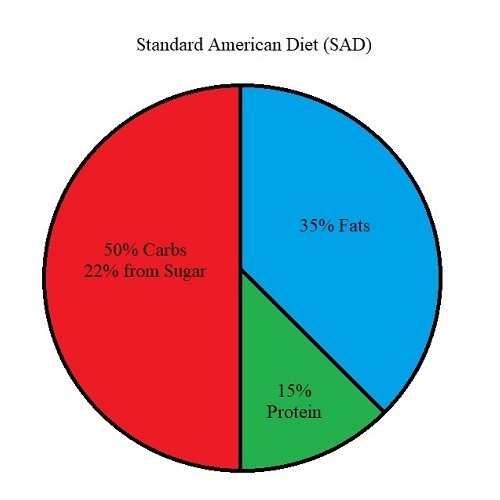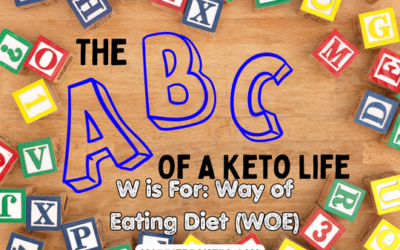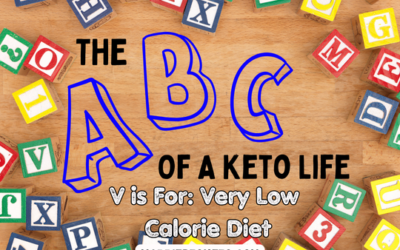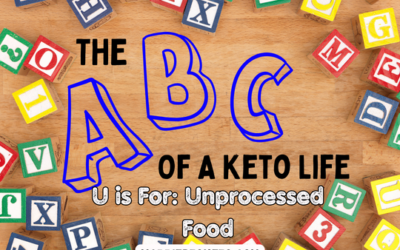We’ve come across a few health professionals who are not fans of keto. Fair enough, there isn’t as much long-term research on keto as some other ways of eating. It must drive them nuts though when our blood work comes back time after time with perfect numbers. What drives me nuts is when health professionals say keto isn’t healthy. I always ask, it isn’t healthy compared to what? So, I thought I should do a series of blogs that compare keto to some of the top ways we eat as North Americans. We start by comparing keto to the standard American diet (SAD).
Standard American Diet
To be fair, this isn’t a diet recommended by anyone, it’s just what we tend to eat if left to our own devices. According to the website Doctor Kiltz, it consists of 2100 calories a day. 16% of those calories come from protein, 47% come from carbs, and 36% come from fat. 22% of the calories taken in are from added sugar. Children (aged 2-19) eat even less protein and more carbs than their adult counterparts. They get over half of their calories (52%) from carbs. 25% of all calories on the standard American diet are from ultra-processed foods. First in this list includes bread. Next on the list is cakes, cookies, and pies.
Keto Basics
Keto uses fat to create energy rather than carbs. A basic keto diet takes in 75% of its calories from fat, 5% from carbs, and 20% from protein. The carbs you do take in, when you do strict keto, are from vegetables and low-carb fruit (like berries). You eat very little processed foods – it’s mostly fresh foods.
Comparing Keto Food to SAD Foods
When you go to the grocery store for keto foods, you stick to the outer aisles. This is where stores have the fresh produce, the meats, and the dairy. We occasionally wander into the frozen section to pick up frozen vegetables, such as cauliflower and broccoli. They don’t have any fillers in them, but they last a lot longer than the fresh versions. The health food aisles also have things like almond flour and sweeteners in them, so we visit them when we need to.

When you’re eating the standard American diet, you bypass a lot of those outer aisles and focus on the inner aisles with all the added sugar. Because, make no mistake, the more added sugar you eat, the more you want. This is where you find the canned goods, the baked goods, and the cereals.
Comparing Keto Benefits to SAD Benefits
SAD increases inflammation and triggers blood sugar levels. It leads to increases in heart disease, diabetes, bowel disorders, and mental health disorders. A lot of research points to this diet contributing to cancer as well. Like I said, no one recommends eating this way, but it is what we turn to most often. Everyone seems to agree on this one thing – SAD is a major contributor to our health issues as a society.
Keto, on the other hand, reduces inflammation and levels out your blood sugar levels. Initial research shows a connection between keto and reduced chronic health issues. At the very least, it helps you lose weight, which keeps chronic illnesses in check.
Final Thoughts Comparing Keto to SAD
I enjoy the acronym SAD because this way of eating is, well, sad. No judgement – I ate this way for most of my 50 years. I raised my daughter eating this way. Did I know better? Sure, but the convenience of processed foods was too good to pass up. I was totally addicted to the salt and sugar in the foods. My idea of eating healthier was buying granola bars instead of chocolate bars.
Today, I’ve been keto for 3 years and at the age of 50, I feel better than ever before. I have energy, my blood work is perfect, and I rarely get sick. Now, I’m not sure how much of this is because I eat keto and how much of this is because I lost weight, but either way, I’ll take it! No question in my mind – keto is a much healthier option than SAD.
Wendy





